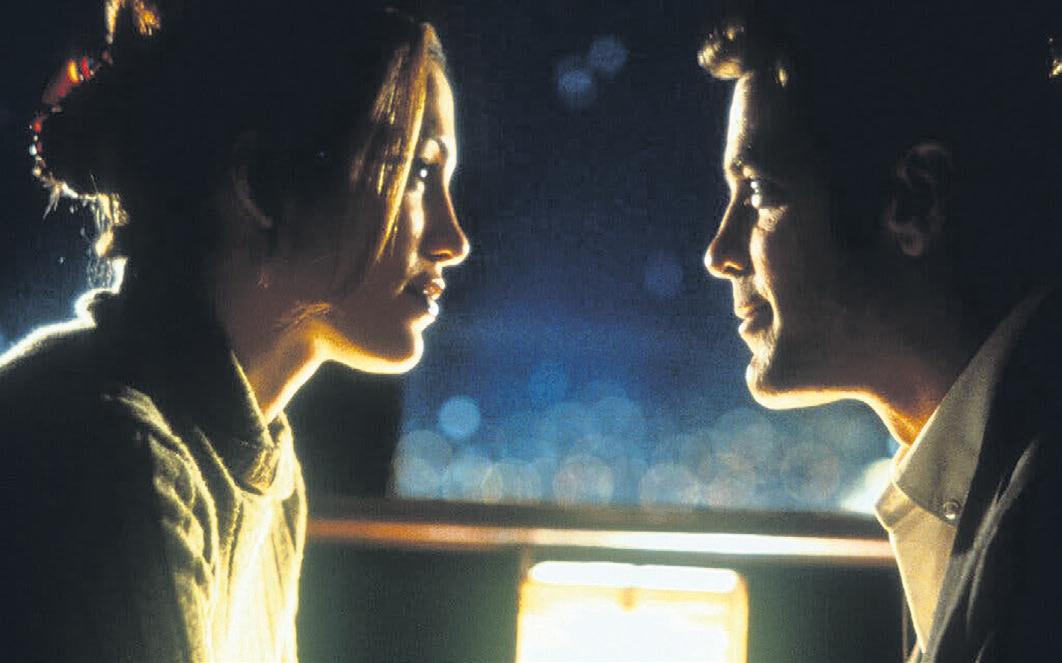
3 minute read
‘Out of Sight,’ 25 years later
By JASON BAILEY
In a journal entry dated Jan. 30, 1997, (and published in his book “Getting Away With It”), director Steven Soderbergh writes of a meeting with Casey Silver, the chair of Universal’s film division, who “asked if he could secretly slip me a copy of ‘Out of Sight,’” a screen adaptation of an Elmore Leonard novel the studio was set to produce with George Clooney in the leading role. “I said sure, I’d read it right away, and I did,” Soderbergh wrote. “It’s a terrific script and all the people involved are good, so of course I called Casey the next day and turned it down.”
Advertisement
Had Silver not pushed back, the ensuing 25 years might have been very different for Soderbergh, who was coming out of a wilderness period of poorly received (or barely seen) projects after the critical and commercial success of his debut film, “Sex, Lies and Videotape” (1989). In other hands, “Out of Sight” might not have proved to be such a game changer for Clooney, who was having a rough time making the transition from “E.R.” heartthrob to movie star. And another director might not have cast Jennifer Lopez, whose movie-star stock also rose considerably after her tough, sexy turn in the film.
“Out of Sight” (streaming on Peacock) was part of a mini-bonanza of Leonard adaptations, following the success of “Get Shorty” (1995). Leonard was so pleased with that film that he offered the producers of “Shorty,” Jersey Films, first crack at the movie rights to the new novel. Universal hoped to bring back Barry Sonnenfeld and Scott Frank, the director and screenwriter of “Shorty,” as well; Frank wrote the crackerjack script, but Sonnenfeld (deep in production on “Men in Black”) declined to return.
Soderbergh was not initially at the top of the list. But when Cameron Crowe and Mike Newell passed, Soderbergh stepped in. (“‘I’m so lucky,” he told The New York Times upon the movie’s release. “I mean, I got this job on the heels of five bombs in a row. How many people get that?’’) His biggest challenge: finding a way not only to set his film apart from the glut of post-“Pulp Fiction” crime movies, but also from Quentin Tarantino’s own Leonard adaptation, “Jackie Brown,” which would hit theaters for Christmas 1997. (Tarantino told him that “Jackie Brown” was “nothing like ‘Out of Sight,’” Soderbergh wrote in March. “I hope not, for my sake.”)
Clooney was already locked in to play the charming bank robber Jack Foley. Jennifer Lopez, fresh off the back-to-back hits of “Selena” and “Anaconda,” reportedly beat out Sandra Bullock, Julia Roberts and Mira Sorvino for the role of Karen Sisco, the federal marshal who apprehends Foley during a jailbreak and finds herself inconveniently attracted to him. (Soderbergh would direct Roberts to an Oscar two years later in “Erin Brockovich,” and cast her opposite Clooney, the first of several onscreen team-ups, in “Ocean’s Eleven.”) Soderbergh filled out the cast with a rogues’ gallery of ace character actors, including Albert Brooks, Don Cheadle, Viola Davis, Dennis Farina, Luis Guzman, Catherine Keener, Ving Rhames and (in unbilled cameos) the “Jackie Brown” co-stars
Samuel L. Jackson and Michael Keaton. Reviews were ecstatic. “Variety” called it a “reflexively witty crime caper.” The Times’ Janet Maslin wrote, “As directed with terrific panache by Steven Soderbergh, these two sultry stars take an intricate Elmore Leonard crime tale and give it steam heat.” Anthony Lane of The New Yorker proclaimed, “Soderbergh has done Elmore Leonard proud,” and the magazine devoted a playful sidebar to the Zippo lighter so crucial to the action.
But audiences didn’t show up, and the $37 million domestic gross didn’t even cover the film’s $48 million budget. However, “Out of Sight” proved Clooney and Lopez could carry a picture with grace and pizazz, and it was the comeback vehicle Soderbergh needed — by 2001, he was competing against himself for best director at the Academy Awards, doublenominated for “Erin Brockovich” and “Traffic.” He won for the latter; its ingeniously striking cinematography, using deeply saturated and distinctive color schemes to clarify its narratives, began as an experiment to separate the timelines and locations of “Out of Sight.” The picture’s use of freeze frames, displaced dialogue and narrative loop-the-loops would further point the way toward the experimentation of his films to come.
In his review, Roger Ebert called it “the first film to build on the enormously influential ‘Pulp Fiction’ instead of simply mimicking it. It has the games with time, the lowlife dialogue, the absurd violent situations, but it also has its own texture.” That texture — of intelligence and wit and playfulness — was the Soderbergh touch, which came to define his work in the new century. “‘People don’t have to pick one or the other,” he contended in 1998. “You can have a film like ‘Out of Sight’ that operates well on a mass-entertainment level and also has quirky, interesting cinematic elements.” That felt like a novelty in 1998; in 2023, it feels like a miracle.










